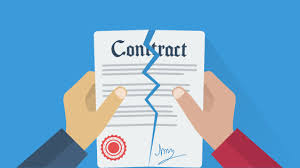
Condition Precedent and Conditions Subsequent
Order Instructions:
Discuss Condition Precedent and Conditions Subsequent.
SAMPLE ANSWER
Condition Precedent and Conditions Subsequent
There are two types of conditions that affect the contractual agreements between persons namely; conditions precedent and conditions subsequent. When the satisfaction of the buyer is needed before the sale takes place, it then meets the threshold of condition precedent. In this case, the buyer has the power to cancel the deal whenever he realizes that the conditions does not meet his expectations, whether it involves financing, appraisal, inspection, insurance, or any other deal. In case of condition precedent, the buyer may waive compliance and precede ways and the buyer usually gets his deposit back (Tepper, 2011). On the other hand, condition subsequent is whereby the deal between the buyer and the seller continues, not unless the buyer gives notice that calls for the stop of the deal. In condition subsequent, there is no waiver but the buyers usually get his deposit back. True condition precedent arises when the contractual relationship demands for a lawful object of the agreement with necessary third party involvement such as the pre-sale of condos and the subsequent and the subsequent enforceability of the agreement.
Unlike condition precedent, condition subsequent is more risky since no paperwork is required during its clean and simple procedure. In condition precedent, no news is good news and the deal proceeds despite one party not paying attention that would terminate the whole transaction. In most cases, the real estate agents use condition precedent in their transactions since the satisfaction of the buyer is critical to the success of their business deal (Tepper, 2011). On the other hand, lawyers mostly use condition subsequent in their clauses to enhance vigilance and ensure that the transaction is properly monitored. True condition precedent are characterized by third party decision making and inability to effect a single party waiver, which only applies in the case of true condition precedent.
Reference
Tepper, P. (2011). The Law of Contracts and the Uniform Commercial Code. Cengage Learning; 2 edition
We can write this or a similar paper for you! Simply fill the order form!












